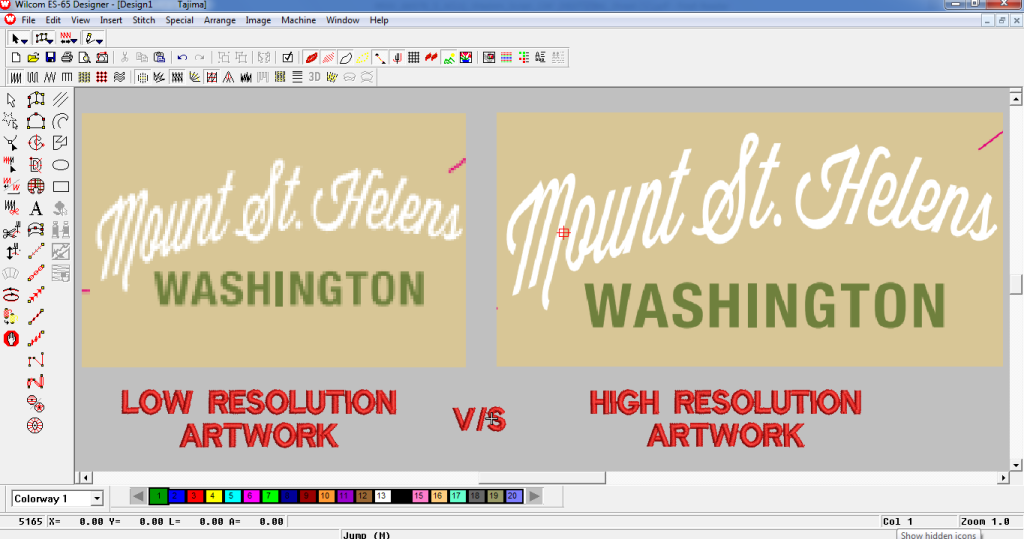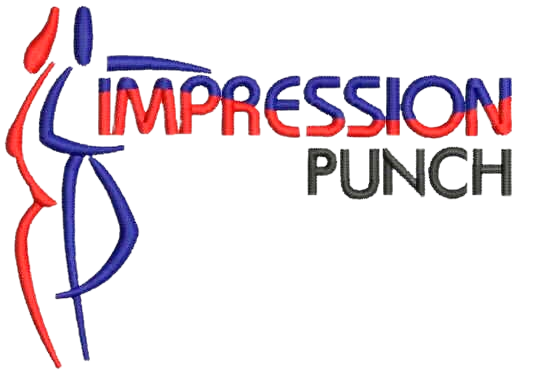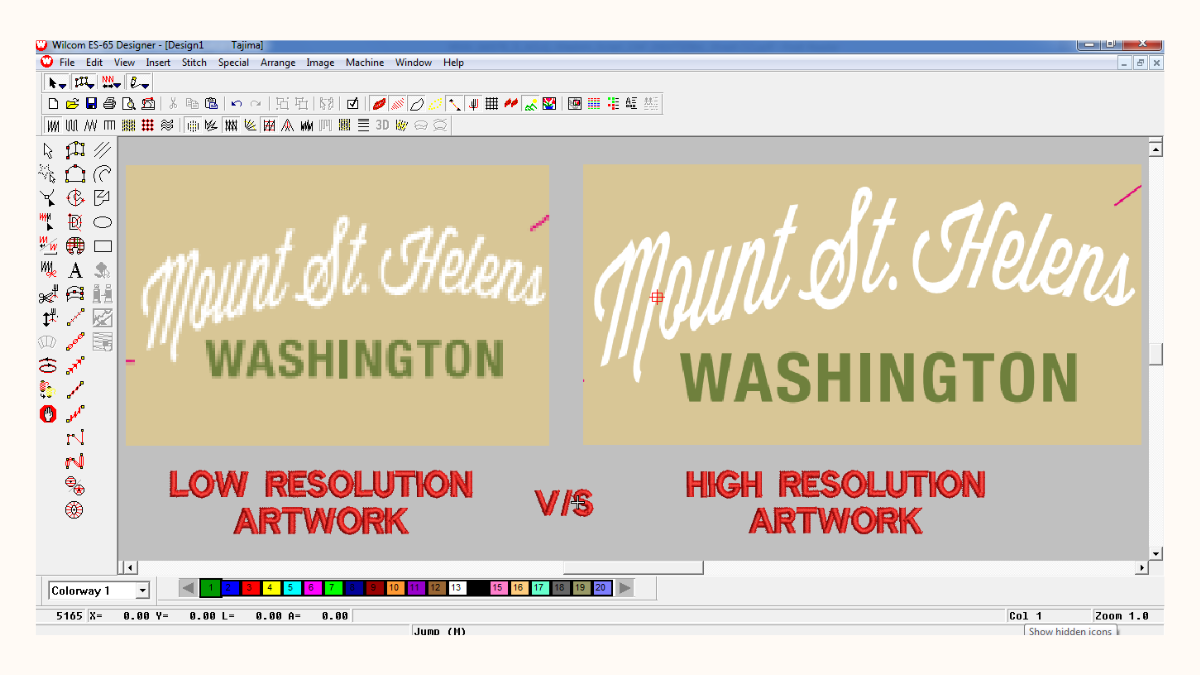Custom digitizing a logo for embroidery is a process that converts artwork into a format that can be read by embroidery machines. Artworks are used as tracing to convert it in to machine language file. The quality of the final embroidered product greatly depends on the initial artwork and the embroidery digitizing process. Here are few points to describe the importance of artwork and few guidelines as well:
- Quality of Original Artwork: High-quality, clear, and detailed artwork ensures that the digitizer can accurately translate the design into a stitch file. Blurry or low-resolution images make it difficult to trace all details over the artwork. Sharp and clean lines in the artwork help in defining stitch paths clearly, ensuring precision in the embroidered output.
- Color Matching: Accurate colors in the artwork guide the selection of thread colors, ensuring the embroidered logo matches the intended design. Although Wilcom has software colors which usually do not match artwork but nearest matching will help embroidery to use thread color according to artwork.
- Layering and Shading: Detailed artwork can depict shading and layering, which are crucial for achieving depth and dimension in embroidery. This is one of the very crucial points regarding the importance of artwork

Picture Explanation for Low resolution v/s High-resolution artwork
- Simplification Needs: Complex designs might need to be simplified without losing the originality of the logo. Clear artwork helps identify which details are essential and which can be simplified.
- Stitch Types and Techniques: Different elements of the artwork (e.g., gradients, textures) influence the choice of stitch types (satin, fill, etc.) and techniques, affecting the overall look and feel of the embroidery.
- Scaling: The artwork must be scalable, retaining detail and clarity whether the logo is embroidered on a large jacket back or a small cap front.
- Proportional Accuracy: Ensuring the proportions of the design are maintained during scaling is vital for the logo to look consistent on different items.
- Stitch Count and Density: Artwork quality impacts the calculation of stitch count and density, affecting the texture and durability of the embroidery.
- Pathing: High-quality artwork helps in planning the stitching path efficiently, minimizing thread breaks and optimizing machine run time.
- Brand Integrity: High-quality artwork ensures that the digitized logo remains consistent with the brand’s visual identity across different mediums (print, digital, embroidered).
- Reproducibility: Clear and precise artwork ensures that the logo can be reproduced accurately in multiple runs and on various items without losing detail.
Conclusion
The artwork used for digitizing a logo for embroidery is foundational to the entire process. High-quality, detailed, and clear artwork allows for precise and effective digitization, leading to an embroidered product that faithfully represents the original design. Investing time and resources into ensuring the best possible artwork will result in higher-quality embroidery, preserving the integrity of the brand’s visual identity.



Leave a Reply